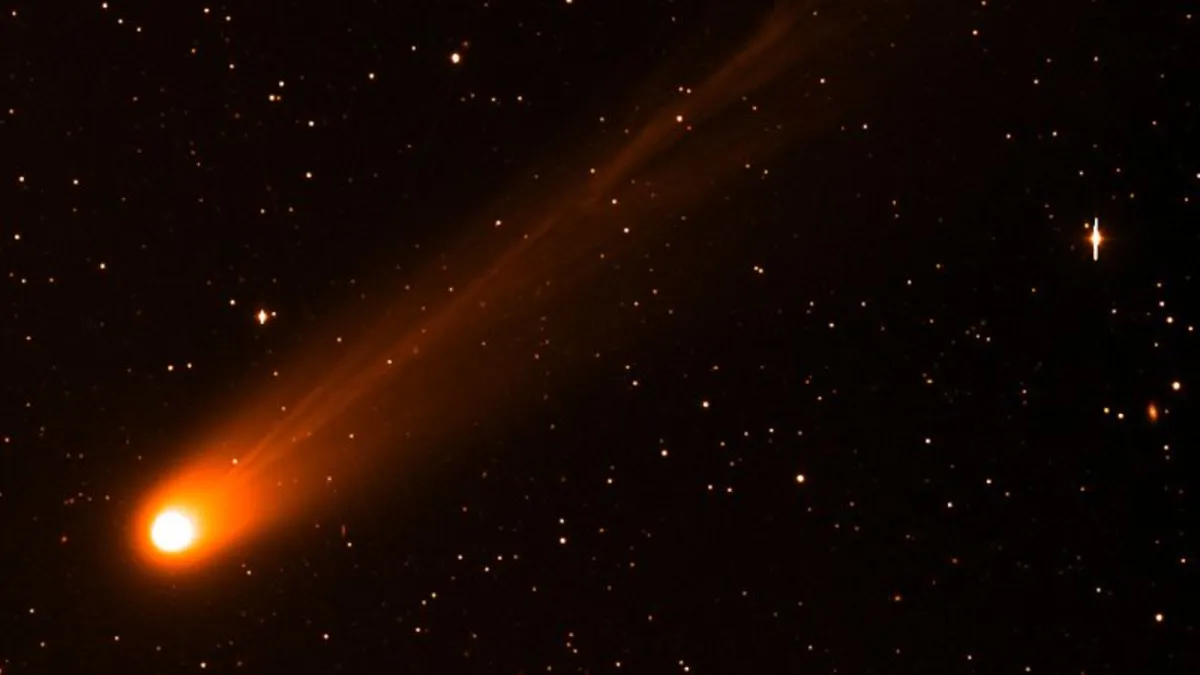
This month, sky-watchers are treated to a spectacular celestial event as two newly discovered comets, C/2025 A6 Lemmon and C/2025 R2 SWAN, streak across the night sky. These comets are made of ice, frozen gases, and rock, and as they drift closer to the sun, the heat causes them to release gas and dust, forming their iconic tails. The comet C/2025 A6 Lemmon was first spotted on January 3, while C/2025 R2 SWAN was detected for the first time on September 10 during its close approach to the sun, according to Qicheng Zhang, a postdoctoral fellow at Lowell Observatory in Flagstaff, Arizona.
For enthusiastic sky-gazers, now is an ideal time to observe these comets using binoculars or telescopes. Both comets follow long-period, oval-shaped orbits around the sun, which means they will only be near Earth for a limited time. Comet SWAN is expected to reappear in about 650 to 700 years, while Comet Lemmon will vanish from sight for another 1,300 years, said Carrie Holt, a postdoctoral fellow and astronomer at Las Cumbres Observatory.
“SWAN is primarily observable in early evenings, right after dark,” explained Quanzhi Ye, an associate research scientist at the University of Maryland. “Lemmon is currently visible just before sunrise but will soon become an evening sight.” Both comets are positioned near the sun from our perspective on Earth, creating a limited window each day for observation, Ye added.
Comet SWAN will make its closest approach to Earth on October 20, coming within 24 million miles (38.6 million kilometers), while Comet Lemmon will swing by at a distance of 55 million miles (88.5 million kilometers) on October 21. Both comets appear similar in images, showcasing a greenish hue surrounded by long, trailing tails, according to Zhang.
Astronomers are keen to study these comets to gather insights about long-period comets, which have orbits lasting 200 years or longer. These comets typically originate from the frigid Oort Cloud, a spherical region of icy bodies at the edge of our solar system. “When these comets are nudged back toward the sun, we can observe materials that have remained unchanged since the solar system’s inception,” Holt noted in an email.
Comet Lemmon is primarily visible to those in the Northern Hemisphere, while Comet SWAN is favored by sky-gazers in the Southern Hemisphere, although it is becoming increasingly visible in the north. Lemmon is anticipated to brighten over the coming weeks, while SWAN is expected to fade rapidly, Ye said.
In November and December, Comet Lemmon will be obscured by the sun but will reappear for Southern Hemisphere observers afterward. Comet SWAN was discovered by amateur astronomer Vladimir Bezugly through images from the Solar Wind ANisotropies (SWAN) instrument aboard the Solar and Heliospheric Observatory spacecraft, a collaboration between NASA and the European Space Agency.
“Lemmon might be one of the best comets of the year for observers,” said Carson Fuls, director of the Catalina Sky Survey at the University of Arizona. “This comet is spectacular because it could potentially be viewed from a dark location with just a regular set of binoculars or even the naked eye at its brightest.” Currently, Comet Lemmon is just below the threshold for naked-eye visibility but is rapidly brightening, presenting excellent viewing opportunities as it approaches Earth.
Fuls encourages observers to take advantage of this time, stating, “This is a great opportunity to view it as the moon will not interfere. It should be visible for about a week on either side of its closest approach, and even longer with a small telescope.”
Holt recommends using binoculars and observing from dark areas away from light pollution. There are various apps available that can help locate the comets in real time. “You can even try capturing images with your phone camera by adjusting the settings for a longer exposure,” she suggested. Free planetarium software like Stellarium or KStars can also accurately indicate the comets' positions relative to the stars.
As of now, Comet Lemmon is located just below the bottom of the Big Dipper, according to Teddy Kareta, an assistant professor at Villanova University. If the weather does not cooperate on the evening of October 20, The Virtual Telescope Project will provide a livestream of both comets from telescopes positioned in dark skies in Manciano, Italy.